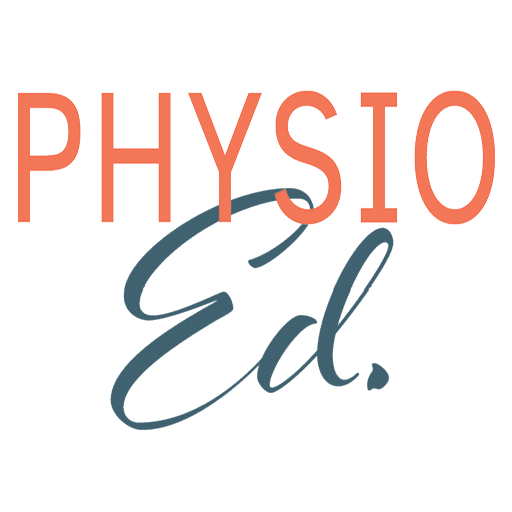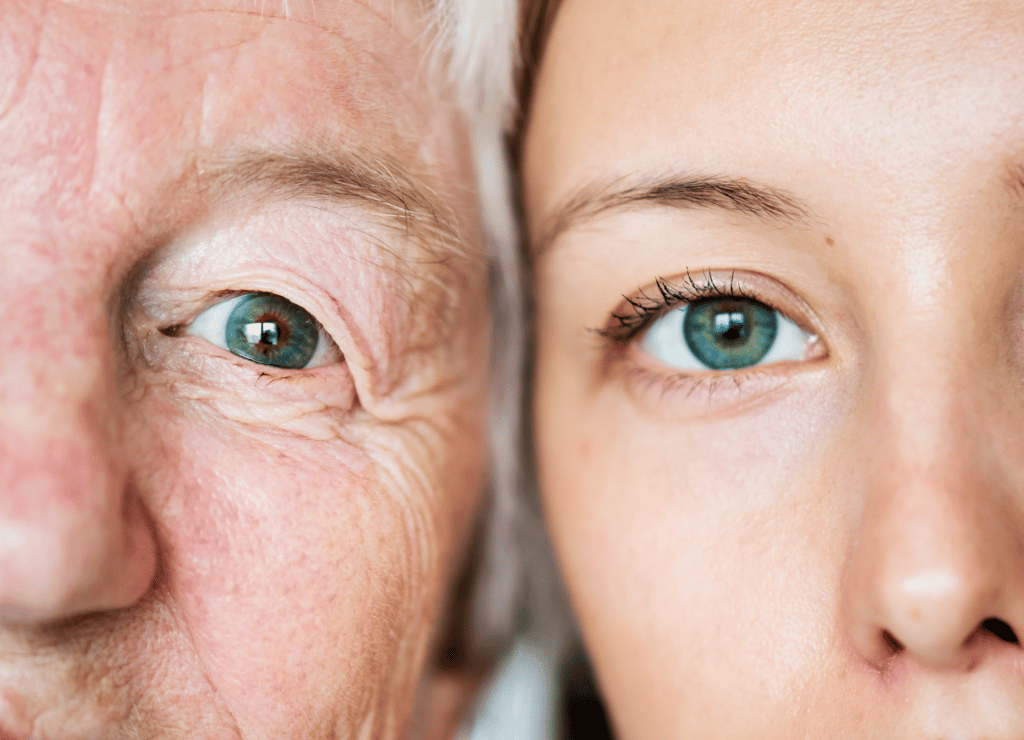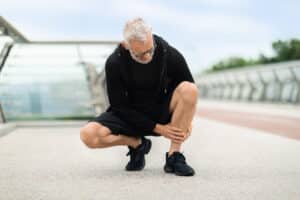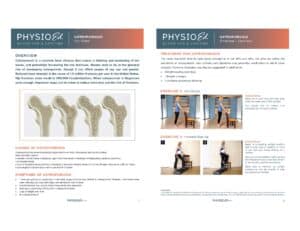Osteoporosis affects millions of people around the world, particularly women. According to the National Institutes of Health and Aging, one in four women over the age of fifty is at risk of developing osteoporosis, and a variety of different factors, both genetic and otherwise could play a role. (1)
So, is there a way to prevent or lower the risk of osteoporosis as we age? What if you have a family history of osteoporosis? In this article, we will dive into the details to find out whether osteoporosis is genetic, environmental, or both.
What Is Osteoporosis?
Osteoporosis is a common condition involving gradually diminishing bone mineral density. It can be caused by a variety of factors ranging from health history and hormones to smoking, alcohol intake, and poor diet, specifically a lack of vitamin D. (1)
This loss of bone mass can lead to an increase in the severity of fall risk (often leading to hip fracture) or other injuries and disabilities. Many of the consequences lead to a decrease in your quality of life, and an increase in your healthcare costs.
Since many of the risk factors relate to female-specific problems like breast cancer and ovarian hormonal disruption, women tend to be particularly susceptible to low bone mineral density-related to Osteoporosis.
Is Osteoporosis Genetic?
The likelihood of developing osteoporosis is a combination of both genetic and environmental factors.
Osteoporosis researchers have found several factors and genetic differences associated with osteoporosis-related low bone mass, osteoporotic fractures, and bone turnover issues. Based on twin studies, there is rarely a single gene that causes osteoporosis or lower bone mineral density, but genetics play a significant role in whether you are at risk for the disease. (3)
Lower than normal bone density, poor bone formation, low mineral content, rate of bone loss, and other genetic effects depend on how genes interact with each other, and gene expression can vary depending on environment and lifestyle. (2)
Known Genetic Factors of Osteoporosis
Estrogen Levels
Risk increases in women after menopause due to decreased hormone levels as the ovaries stop producing the female sex hormone estrogen. Disruptions in estrogen levels from health issues like ovarian or breast cancer, or the onset of early menopause can lead to a higher risk of osteoporosis. (1)
Genetic Variants
A combination of certain receptors affects bone mineral density, and researchers have identified certain genes that appear to work in tandem to influence osteoblasts, or bone cells responsible for the rebuilding of bone tissue or “bone accrual”. Any single genetic component may not be present for every person, and further genome-wide association studies are underway to identify other genes that may influence the disease. (3)
The closer researchers can get to identifying specific candidate genes, the sooner they will be able to identify the best possible treatment.
If I Have a Genetic Risk Will I Get It?
Family studies reveal that genetics alone do not constitute a risk factor for Osteoporosis. This indicates that if you have genes linked to increased bone loss, it doesn’t automatically mean you will develop osteoporosis, so your environment also plays a role. (4)
If your family has a history of osteoporotic risk factors, you should be screened by your doctor for any genetic predisposition so that they can help provide resources and take preventative measures.
Daughters of women with osteopenia, osteoporosis, or early onset of menopause should consider taking these steps early. Again, many symptoms are not outwardly obvious but can be improved with lifestyle changes.

Environmental Factors That Cause Osteoporosis
Alongside genetics, environmental factors to consider might include:
- Overuse or prolonged use of steroids or corticosteroids
- Exposure to black carbon air pollution
- A history of smoking
- The risk of osteoporosis increases with age
- Low body mass index scores (also known as very low body weight)
- Lack of exercise can contribute to your risk level through lowered bone mass
- High levels of homocysteine (a common amino acid in your blood)caused by excess meat and dairy consumption are associated with osteoporotic fracture risk and heart disease, independent of other risk factors.
Certain risk factors are common and may be unavoidable, but many osteoporosis-related traits can be easier to recognize and address.
Talking to your doctor may be the best way to find out if you are truly in a high-risk category.
Does the Cause Make a Difference in Treatment?
There are treatments to address both genetic and environmental factors, but there is no cure for osteoporosis once the condition has developed.
Your treatment will depend on the cause of your osteoporosis.
If you have low levels of vitamin D or calcium, your doctor might prescribe you supplements to boost vital nutrients, strengthen bones, and reduce your risk of fractures. Your primary care doctor can also prescribe medications for osteoporosis as injections or oral medication.
For post-menopausal women, hormone replacement therapy is also an option. Most women with low estrogen levels can benefit from hormone replacement therapy.
Doctors will always recommend eating a nutritious diet and living an active lifestyle. Consult your doctor to make sure you are starting an appropriate program safely.

How Can You Prevent Osteoporosis?
Consequences
Osteoporosis is associated with an increased risk of morbidity and mortality. Due to a decrease in bone quality, osteoporosis can lead to many negative effects such as:
- An increased risk of vertebral or hip fractures
- Functional impairments and loss of independence with activities of daily living. For example, you might have difficulty with everyday tasks such as dressing and bathing after a hip fracture.
- Difficulty walking or walking with an impaired gait. You might need an assistive device like a cane or walker. The loss of bone strength leads to frailty and a higher risk of injury.
- Increased medical costs. Hospitalization and treatment after a hip or lumbar spine fracture is costly
Steps You Can Take Right Now
You can address both genetic and environmental factors to reduce your risk of osteoporosis. Ways to prevent osteoporosis and improve bone mineral density include:
- Performing weight-bearing exercises such as squats, lunges, step-ups, and weighted exercises to improve bone tissue strength and promote bone formation
- Building consistent general exercise and healthy activity habits like taking daily walks.
- Balance classes or exercises to reduce one’s fall risk (falls often lead to fracture risk)
- Consume a diet rich in nutrients, including vitamin D, vitamin B, and folate. Fruits, vegetables, and leafy greens like spinach can also reduce homocysteine levels. These foods are a good source of vital nutrients.
- Reduce the risk of osteoporosis with healthy weight loss. Avoid eating a lot of meat and dairy. Use a step tracker to avoid a sedentary lifestyle. This can lower the risk of developing cardiovascular diseases as well.
- Reduce the long-term use of steroids/corticosteroids. Talk to your doctor to inquire about alternatives.
- Reduce or quit smoking and decrease exposure to air pollution when possible.
- Undergo hormone therapy to treat low estrogen levels. This can be beneficial in risk reduction for both pre- and postmenopausal women.
- Increase your exposure to sunlight for Vitamin D. Some foods are also “fortified” with vitamin D.
- Learn and share family health history with your doctor
Certain factors like ethnic background (white and Asian women are particularly susceptible), while location, diet, and socioeconomic status will vary from person to person.
While many of these prevention methods are inexpensive or free, it is best to talk to your doctor for clear medical advice for your specific circumstances.
Conclusion
Osteoporosis is a complex disease with both genetic and environmental causes. Treatment and prevention of bone disease depend on your age, your family history, and a variety of other factors. No one thing alone causes osteoporosis, but rather it is typically a number of different causes together.
We hope that the steps outlined in this article can help you to reduce your risk of developing worsening symptoms. Early detection of Osteoporosis involves taking a look at your background, your diet, your exercise, and your healthy– or not-so-healthy habits to prevent the disease and improve your chances of living a longer and healthier life.
References:
- https://www.nia.nih.gov/health/osteoporosis
- Ralston SH. Genetics of osteoporosis. Proc Nutr Soc. 2007 May;66(2):158-65. doi: 10.1017/S002966510700540X. PMID: 17466098.
- Chesi, A., Wagley, Y., Johnson, M.E. et al. Genome-scale Capture C promoter interactions implicate effector genes at GWAS loci for bone mineral density. Nat Commun 10, 1260 (2019). https://doi.org/10.1038/s41467-019-09302-x
- Stewart, T. L., & Ralston, S. H. (2000). Role of genetic factors in the pathogenesis of osteoporosis. The Journal of Endocrinology, 166(2), 235-245. https://doi.org/10.1677/joe.0.1660235
- Ongphiphadhanakul, B. (2007). Osteoporosis: The role of genetics and the environment. Forum of Nutrition, 60, 158-167. https://doi.org/10.1159/000107166
- Özbaş, H., Onrat S. T., Özdamar, K. (2012). Genetic and environmental factors in human osteoporosis. Molecular Biology Reports, 39, 11289-11296. https://doi.org/10.1007/s11033-012-2038-5









